6 Unspoken Rules Every Horror Movie Monster Always Follows

Four decades of horror movie franchises have allowed us to chart the exact cinematic career path of any new teenager-murdering icon. It's not entirely dissimilar from the career trajectory of a 1980s teen heartthrob -- all of the Freddys and Jasons and Leatherfaces of the world enjoy a meteoric rise to stardom, a drug-fueled "Two Coreys" flash in the spotlight, an embarrassing slide into irrelevance, a misguided attempt to reinvent themselves, and finally a VH1 Behind The Music special in the form of a tear-jerking cinematic origin story.
To help illustrate this journey, let's create our very own horror movie slasher. And by that, I mean I will create this character on my own with absolutely no input from any of you. I'm sorry for any confusion that errant contraction may have caused.
Don't Miss
Our supernatural slasher is The Bone Fiddler, an undead tumbling clown from 17th-century Paris who turns his victims' bones into fiddles. You can tell when he is about to strike, because you will hear the unmistakable sound of someone trying to play a fiddle made of bone, which, for the uninitiated, sounds almost exactly like a Haddaway cassette being eaten by the tape deck of an Oldsmobile Cutlass.
For Some Reason, Horror Movies Are Star Magnets

Horror films are really good at luring bright-eyed young actors with dreams of stardom into their franchises, because hopeful young people are notoriously easy to murder, and art imitates life in powerful ways. But slasher movies seem to have a disproportionate tendency to propel the careers of the next generation of A-list actors. Rubbing elbows with Freddy or Jason can be better for your acting career than going to a pool party at Robert Evans' house and helping him inject cocaine into his penis.
First on the scene was Michael Myers, the Shatner-masked villain of John Carpenter's Halloween. That movie was the big-screen debut of Jamie Lee Curtis. Dana Carvey showed up in Halloween II four years before he joined the cast of Saturday Night Live. Paul Rudd had a starring role in Halloween: The Curse Of Michael Myers the same year he was in Clueless. And Josh Hartnett, Michelle Williams, and Joseph Gordon-Levitt are all in Halloween H20, although JGL gets improbably murdered with an ice skate about six minutes in. Adam Arkin tried to make the leap from television to the big screen in the same movie, but he gets stabbed to death halfway through and went immediately back to television, where he is stabbed no more.

"Save yourself, Adam Arkin!"
Leatherface (whose first film appearance actually came before Michael Myers', but nobody in the original Texas Chainsaw Massacre ever amounted to anything) jump-started the careers of Viggo Mortensen in Texas Chainsaw Massacre III, Jessica Biel in the Texas Chainsaw remake, and Renee Zellweger and Matthew McConaughey in The Return Of The Texas Chainsaw Massacre (also known as Texas Chainsaw Massacre: The Next Generation). In true McConaughey fashion, he does not remember which Texas Chainsaw film he appeared in, although he presumably has no trouble recalling Reign Of Fire.

"Wait ... which one is this?"
Freddy Krueger detonated Johnny Depp in Depp's first-ever appearance as an actor in A Nightmare On Elm Street. Academy Award-winner Patricia Arquette debuted in Nightmare On Elm Street 3: Dream Warriors. Rooney Mara was in the Nightmare On Elm Street reboot the same year she was in The Social Network and one year before she got an Academy Award nomination for The Girl With The Dragon Tattoo.
Jason may not be in the first Friday The 13th movie, but Kevin Bacon totally is. Corey Feldman makes his feature film debut in Friday The 13th Part IV, which also features Crispin Glover in nothing short of a star-making performance as a spasming goofball trying desperately to eliminate the concept of heterosexual sex from the minds of every female in the room.

He is supposed to be dancing in this scene.
Even the bullshit horror franchises helped out the careers of some now-familiar faces -- there's Jennifer Aniston in Leprechaun, Adam Scott in Hellraiser: Bloodline, Henry Cavill and Katheryn Winnick in Hellraiser: Hellworld, and Katherine Heigl in Bride Of Chucky. (That last one made it in at the buzzer; there isn't a single fucking person in those goddamned Chucky movies.) And you can thank Scream for Jamie Kennedy, but why would you want to?

You wouldn't.
And those are just the slasher films. George Clooney and Clint Eastwood both began in shitty monster films as well -- Clooney fought a killer ghost and giant tomatoes, and Clint Eastwood flew a fighter jet at a colossal tarantula, which is still only the second-most ridiculous thing he has ever done in a movie.

This made more money than any of the Dirty Harry movies.
The point is, if you find yourself getting your head twisted off by a wildly eccentric supernatural murderer, you have an equal chance of becoming an international superstar as you do of going back home to Ohio to work at a Jiffy Lube.
So, the first film in The Bone Fiddler franchise will feature at least one future Academy Award nominee, one or two future comedians, the future star of a wildly successful sitcom, and Ke$ha.
Slashers All Come From (Totally Ignored) Bad Parenting
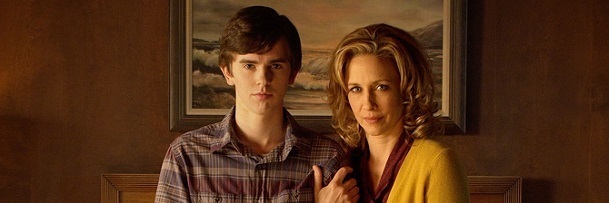
Freddy Krueger is a child-molesting murderer who is burned alive by a mob of angry parents. Jason drowns in a lake because his summer camp counselors couldn't bother to pay attention to him. Scream is about a kid violently reacting to his father's infidelity. Leatherface is the product of an insane father and mother. Samara, the ghost in The Ring, was tossed in a well by her mom. Norman Bates was driven insane by his mother, whom he probably had sex with both before and after she transformed into a dusty mummy.

Something hollowed out those eye sockets.
There's a clear thread of abuse and neglect through all of these films. With the exception of Freddy Krueger, every single one of those killers was turned into a monster by forces beyond their control, and almost none of the original movies recognize this. The abuse is always a quick side note, briefly mentioned in a stretch of expositional dialogue explaining why a man in coveralls and a bleached Halloween mask is Solid Snaking his way through a sleepy suburban neighborhood, carrying bodies back and forth between houses like he's refereeing a game of hide-and-seek that nobody else realizes they are playing.
We're not meant to feel sympathy for these characters. The fact that they started out as neglected, terrified children is meant to make them even more scary, because the implication as presented in these original films is that the killers have been monstrous lunatics for pretty much their entire lives. The last time they were anything close to normal was back when they were children. So if you're looking for mercy now, you are barking up the wrong tree.

Jason doesn't give a fuck if you're in a wheelchair.
We would learn from an early scene in The Bone Fiddler that the titular fiddler of bones was a young Parisian boy who loved the circus, but his parents would never allow him to go. So he snuck out one night to see the dancing clowns, only to accidentally knock over a lantern in his attempt to creep inside the main tent and burned the entire circus to the ground, killing hundreds. He was sent to a children's workhouse for his crimes, where he died of cholera. Also, he played the fiddle. That's an important detail.
Eventually They Try To Shake Things Up With A Sidekick And/Or An Unrelated Spinoff

OK, so after a few movies retell what is essentially the same story -- the murderous villain chops his way through a group of teenagers only to be thwarted at the last minute by the discovery of some new rule that inexplicably governs his behavior -- the producers try to switch things up in order to keep the franchise from getting stale. So the villain winds up getting either a sidekick or a weird understudy or getting booted out of the story completely for a movie or two.
Chucky hooks up with Jennifer Tilly in Bride Of Chucky, and she transforms into his tiny plastic wife for the remainder of the series. Tommy Jarvis, the little boy played by Corey Feldman in Friday The 13th, kills Jason at the end of Part IV, so Part V is all about a halfway house full of Jason copycat killers, including Tommy himself.

The main character flips out at the end of Texas Chainsaw Massacre 2, kills everyone with a chainsaw, and starts doing the Leatherface dance at the peak of a Confederate beehive.
Then there's the little girl in Halloween 4 who goes crazy and puts on a clown suit to stab her entire family, just like Michael Myers:

They also inevitably release sequels that don't involve the iconic murderers, because the producers are operating under the assumption that what audiences are really connecting with is the title Friday The 13th and not a hulking physical comedian in a hockey mask.
This is actually true -- the original plan was to make Friday The 13th a series of horror films that all featured different characters and storylines but centered around the superstitious dread associated with Friday The 13th. Case in point -- the very first Friday The 13th film, the movie that launched the entire franchise, doesn't feature Jason at all. It's his bereaved mother, wearing the kind of sweater and hairstyle combination that suggests she spends most of her time teaching kids at the library how to make pine-cone turkeys for Thanksgiving. The aforementioned Friday The 13th Part V: A New Beginning tried to continue this trend of shaking things up by having the killer be a character who had survived the wild Jason attacks from a previous film and went full banana sandwich. And Friday The 13th: The Series didn't have anything to do with Jason whatsoever -- it was a vignette show about a haunted antique store, sort of like Tales From The Crypt, if that show were intensely boring and took place in an antique store. At least Freddy was in his TV show.

Then there's Halloween III: Season Of The Witch. Not only does Halloween III infamously not feature Michael Myers but the film doesn't connect to the characters, locations, or events of the previous two movies in any way. This movie could literally have been titled anything else.
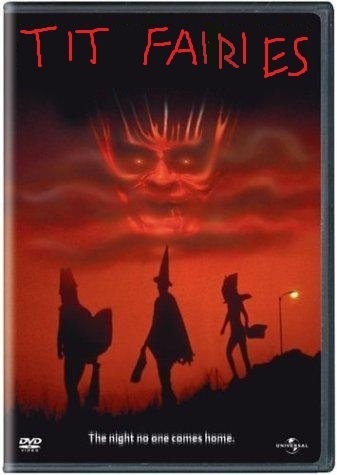
According to John Carpenter, the plan was to try to turn Halloween into more of a cinematic universe than a slasher franchise, with a new film every year or two that would follow a completely new set of characters getting into some kind of spooktacular misadventure on Halloween. Halloween III is also noteworthy for featuring a man named Dick Warlock.

The Bone Fiddler would eventually have to make way for The Vein Harpist and The Mummified Penis Flautist, before making the move to the USA Network to host a vignette show about a haunted library. It will be canceled after half a season, due at least in part to the fact that The Bone Fiddler can speak only in jaunty riffs from his skeletal fiddle, which negatively impacted his hosting ability.

It Doesn't Take Long For Them To Become Parodies Of Themselves

Chucky gets married and then goes to Hollywood and has kids in the fourth and fifth Child's Play films. Wes Craven's New Nightmare takes place in the real world, where Freddy begins terrorizing the cast of past Nightmare On Elm Street films. He then eventually fights Jason, who at this point has been to space.
This is the poster for Texas Chainsaw Massacre 2:

Yes, the very first sequel to one of the most controversial American horror films ever made has a Breakfast Club reference as its poster.
Halloween: Resurrection turns Michael Myers into a reality TV show. Scream 3 and 4 are both about movies based on the original Scream, and everything compounds into a ridiculously insufferable meta story. Hellraiser: Hellworld is about an evil video game, which is an MMORPG about Hellraiser.
Every one of these goddamn series eventually gets meta -- sometimes to the point of transforming the villains we spent so long being frightened of into laughable cartoon characters. And this totally makes sense, actually. Imagine hanging out with Freddy Krueger for an extended period of time without anyone dying. His jokes are all murder puns -- none of them work unless he's actively killing someone in a wildly imaginative manner. If nobody was dying, Freddy would just kind of get annoying to be around after a while.

"We get it, Freddy. You're wearing the Power Glove. Please shut up about it."
Chucky is a doll -- it's hard to make multiple films about him killing able-bodied adult humans without addressing how dumb that is. Leatherface is the same way -- the more you think about this hooting madman as a living, breathing, pooping human, the sillier he seems. Does he leave the mask on when he's pooping? Probably, right?
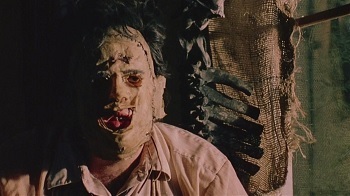
Definitely.
Horror movie villains also have a tendency to collide with the Big City and/or '90s hip hop in thoroughly embarrassing ways. Freddy rapped with The Fat Boys in a haunted mansion. Jason went to Manhattan (for approximately 20 minutes of the movie entitled Jason Takes Manhattan) and drop-kicked somebody's jambox across Times Square. The Leprechaun has done two different movies that are exclusively about him rapping.
Throughout the course of his career, The Bone Fiddler would inevitably play a fiddle duel with Charlie Daniels and appear in a Bone Thugs-N-Harmony music video. However, rather than go to space like Jason and the Leprechaun, The Bone Fiddler would attack a team of researchers at the bottom of the ocean after the team accidentally uncovered a cursed fiddle from a sunken pirate galleon.
Then Comes The Totally Unironic And Serious Reboot

Recently, a Child's Play reboot was attempted, entitled Curse Of Chucky, that aimed to bring Chucky back to his legitimate horror roots while ignoring all of the buffoonery from the previous sequels. Problem is, the cat is more or less out of the bag at this point: We all know Chucky is stupid. They spent the past two decades making Chucky movies full of uncomfortable puppet sex and timeless Britney Spears references. As a result, Curse Of Chucky actually managed to bomb despite having a meager $5 million budget.

The curse itself was a wild success.
The Nightmare On Elm Street reboot attempted to recast Freddy as a reptilian child rapist, which is difficult to do when one of the last Nightmare On Elm Street films (Freddy's Dead: The Final Nightmare) was little more than Freddy hosting a variety show about obscure early-'90s pop culture references, which is not unlike the variety show he actually hosted (see "they become ridiculous," above). The Scream series spent three sequels making fun of all the tropes of horror movies. Now check out the first eight minutes of the new Scream TV show.
It's a ditzy high school girl in a fancy house walking around half-naked and texting with her bro boyfriend, who ends up being dead, and it turns out she was texting with the killer THE WHOLE TIME. At one point, she tries to call 911 and the phone mishears her voice command. She never tries to dial it again, with her voice or, you know, her hands, because that might save her from being murdered, and that is not what we came here to see. It's everything the original Scream was making fun of, redone without a trace of irony.
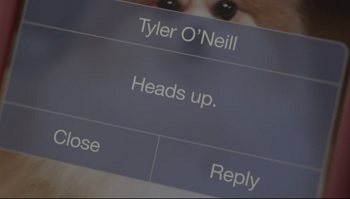
Thrills!

And chills!
My point is that it's really hard to take a Friday The 13th reboot seriously when Jason has been in space and interviewed by Arsenio Hall. Consequently, neither the Friday nor Nightmare reboots managed to spawn the new franchises the producers were hoping for. The Bone Fiddler would face a similar struggle, because after so many years of sequels and hilarious celebrity cameos, audiences would simply no longer be frightened by macabre fiddling.
So, what's left to explore?
Inevitably, We Get A Sympathetic Origin Story
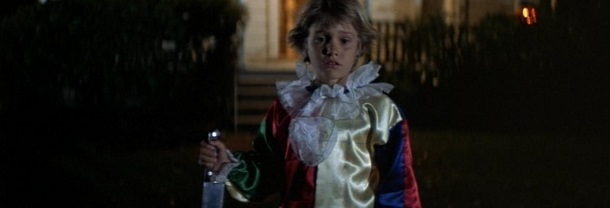
Finally, after endless sequels, spinoffs, and baffling attempts to turn them into late-night TV hosts, producers begin to realize that maybe the fact that these characters have been crushed into evil diamonds by the compounding pressure of a terrible childhood was something we should feel bad about. Hannibal Rising taught us that Hannibal Lecter didn't become a psychotic bastard until after a bunch of soldiers killed his sister and fed her to him. Bates Motel really drives home the point that Norman Bates never really stood a chance at becoming a functional member of society, because his mom was crazier than a pillowcase full of raccoons and was trying like hell to fuck him. Rob Zombie's Halloween showed us that Michael Myers was driven insane by years of poverty and abuse. And the upcoming Leatherface origin story will explore the troubled childhood that led to The Texas Chainsaw Massacre, no doubt featuring a scene wherein young Leatherface gets picked last for kickball and flays his guidance counselor alive.

"You said I could get into Dartmouth!"
Heck -- there's a good chance we're getting both Hellraiser and Nightmare On Elm Street origin stories as well, because why not? Might as well see what photo album those two demons get all weepy over when no one's around.
So, we start by demonizing characters who were wronged horribly and are sometimes even completely innocent to start (like Jason Voorhees), go totally off the rails with self-aware parody films making fun of them, try unsuccessfully to make the characters scary again, and only after all of those things fail do we consider the characters from some kind of sympathetic standpoint where we question how they got so deranged in the first place. In other words, all you Bone Fiddler fans better get ready to see a movie about a sad French boy accidentally burning down the circus because his parents didn't love him enough.

Tom is currently working on a Bone Fiddler revival series for Netflix. Read his novel Stitchesand follow him on Twitter and Tumblr.
For more reasons we shouldn't be scared by horror movie mumbo jumbo, check out The 5 Most Half-Assed Monsters in Movie History and 6 Classic Horror Films You See Differently In A New Audience.
Subscribe to our YouTube channel and see the only thing horror movie killers are good for in Why Horror Movie Slashers Are The Best Wingmen Ever, and watch other videos you won't see on the site!
Also follow us on Facebook, because we have an affinity for hiding under beds.